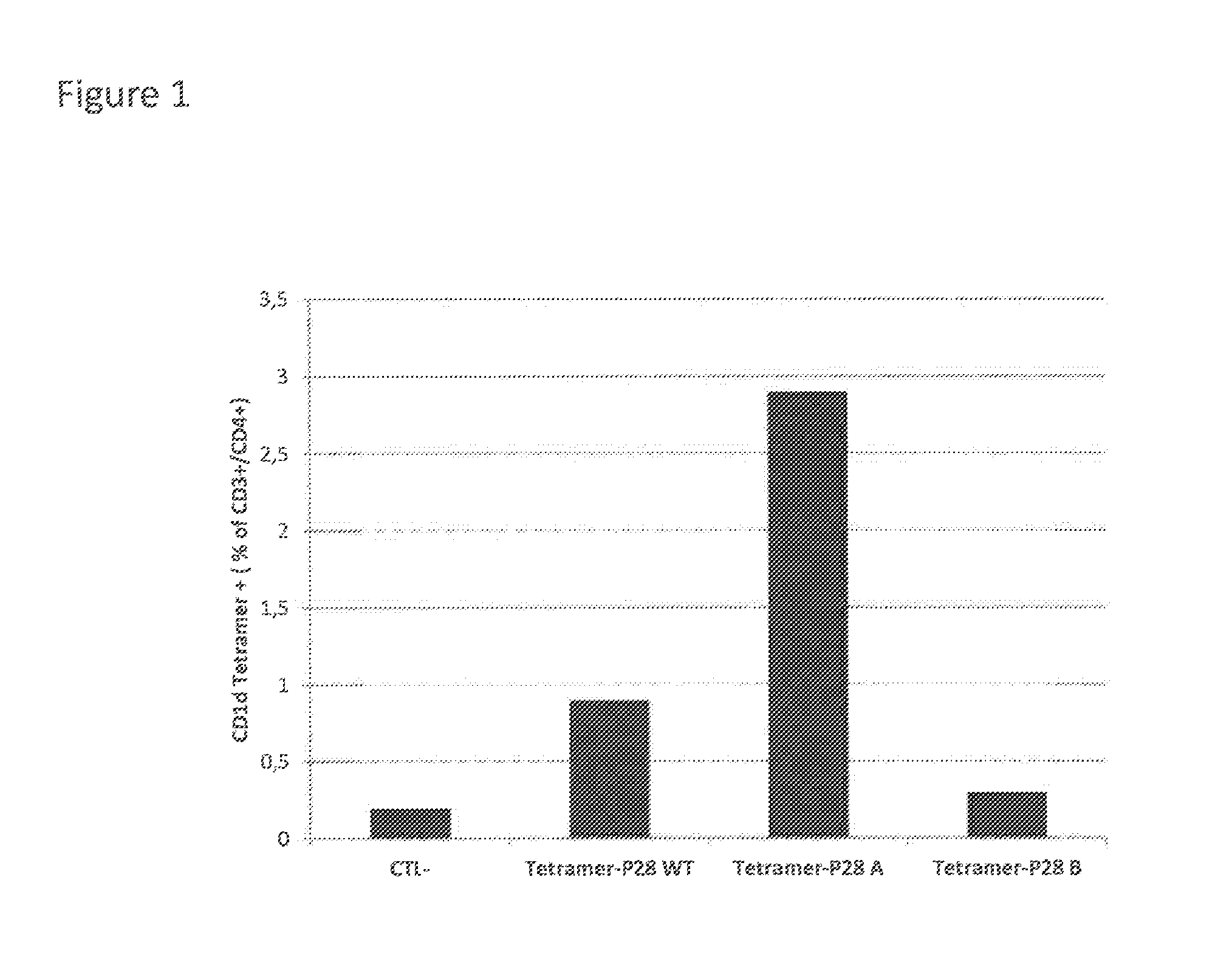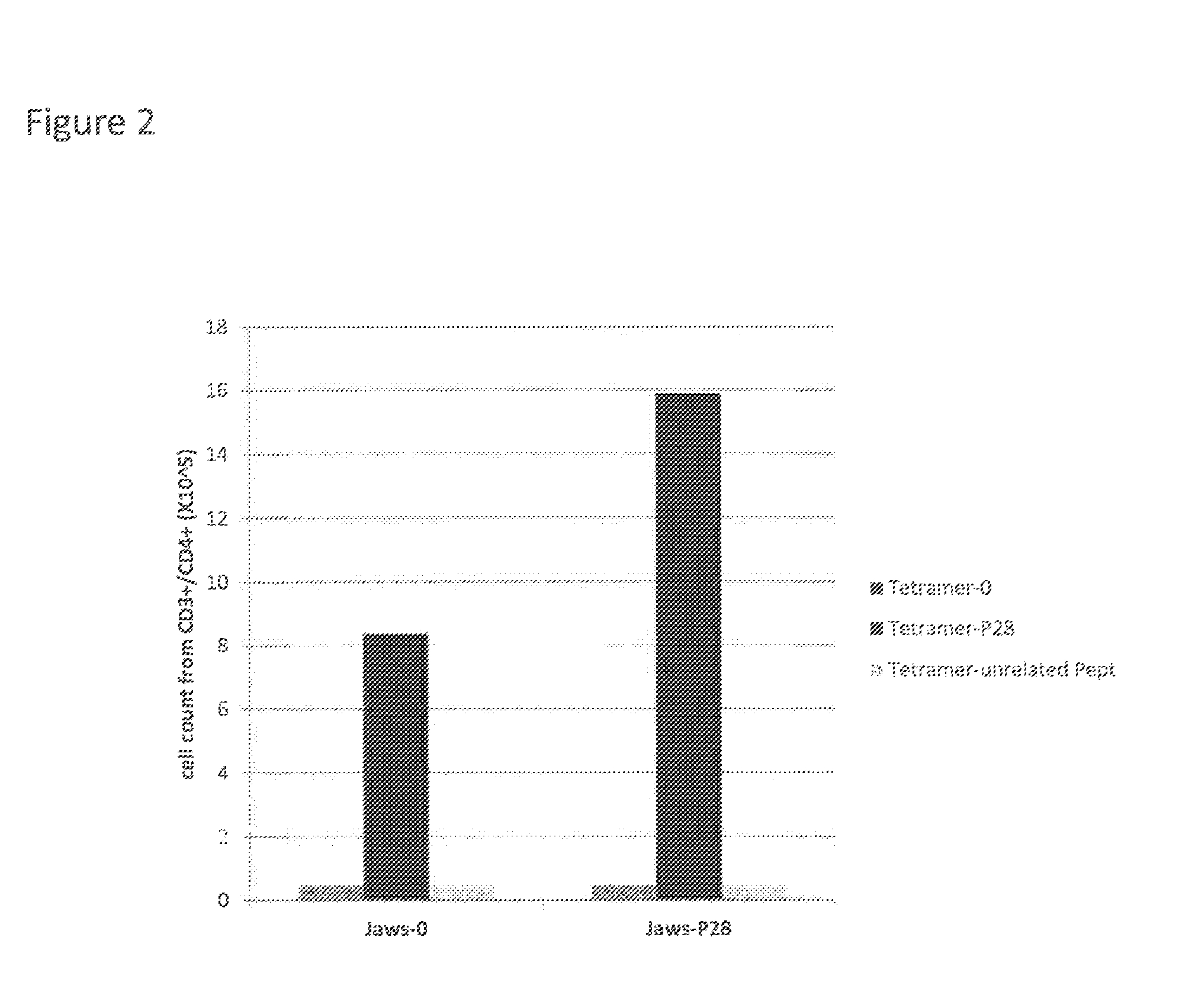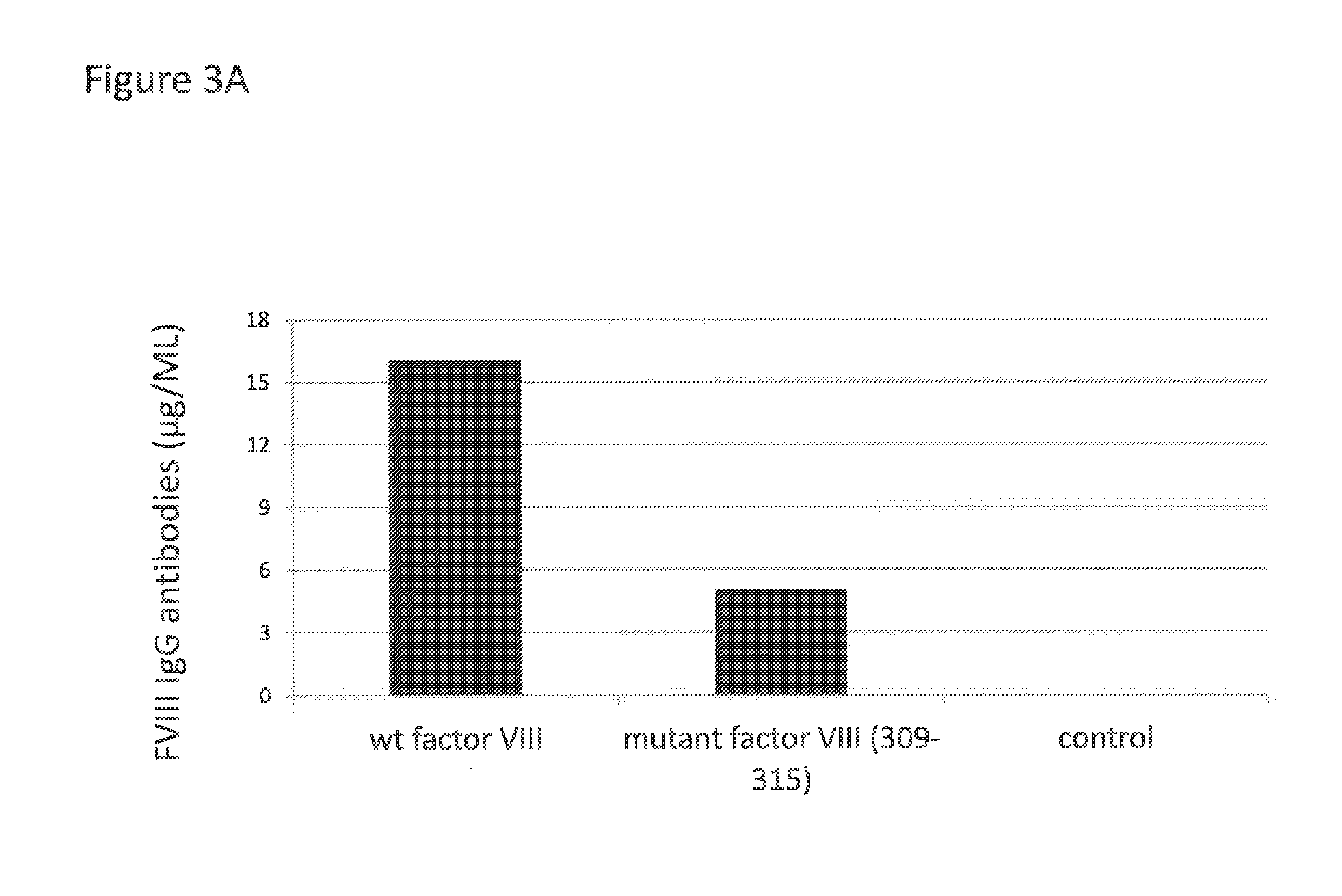Coagulation factor viii with reduced immunogenicity
a coagulation factor and immunogenicity technology, applied in the field of molecules of coagulation factor viii, can solve the problems of inability to predict surrogate markers, inability to detect inhibitors, and inability to reliably achieve immune tolerance therapy, etc., and achieve the effect of limited polymorphism and easy synthesis
- Summary
- Abstract
- Description
- Claims
- Application Information
AI Technical Summary
Benefits of technology
Problems solved by technology
Method used
Image
Examples
example 1
Binding of Peptide of SEQ ID 1 to CD1d Tetramers
[0077]A peptide encompassing SEQ ID1 was obtained by chemical synthesis. This peptide was used to load CD1d tetramers (ProImmune) by overnight incubation.
[0078]NKT cells were prepared from the spleen of naïve mice by depletion of all CD4(−) cells using magnetic beads.
[0079]CD4+ cells were then incubated with CD1d tetramers loaded by peptide of SEQ ID1 (P28 WT in FIG. 1), which corresponds to aminoacid sequence 190 to 209.
[0080]FIG. 1 shows that ±1% of CD4+ T cells were detected. Further, peptide of SEQ ID1 was separated into 2 parts and synthetic peptides covering the sequence 190-200 (SEQ ID3, P28 A in FIG. 1) and 200-210 (SEQ ID4, P28 B in FIG. 1) were produced.
[0081]Sequence of peptide of SEQ ID3 is:
QTLHKFILLFA (corresponding to aminoacid sequence 190 to 200)
[0082]Sequence of peptide of SEQ 104 is:
AVFDEGKSWHS (corresponding to aminoacid sequence 200 to 210)
[0083]The Figure indicates that a major CD1d binding motif is located in SEQ ...
example 2
Activation of NKT Cells by Immunization with JAWS2 Cells Loaded with Peptide of SEQ ID1
[0085]JAWS2 cells express CD1d but not MHC class II determinants. These cells were used to show that the presentation of peptide of SEQ ID1 can occur via CD1d.
[0086]JAWS2 cells were incubated 2 h at 37° C. with peptide of SEQ ID1 (10 μg / ml) and thoroughly washed twice. Cells were then treated with mitomycin to block cell division and washed 4 times to eliminate mitomycin. A cell suspension containing 2×106 cells in physiological serum was injected by the intraperitoneal route in each of a series of 3 naïve factor VIII KO mice. As a control, 3 naïve factor VIII KO mice received the same number of JAWS2 cells which had not been incubated with peptide of SEQ ID1.
[0087]Five days after IP injection, the mice were sacrificed and their spleen prepared as above using magnetic beads to eliminate all CD4(−) cells.
[0088]CD4+ cells were then incubated with tetramers loaded with peptide of SEQ ID1.
[0089]FIG. 2...
example 3
Administration of Mutated Factor VIII Reduces the Formation of Antibodies to Factor VIII
[0092]To determine whether mutation aimed at eliminating CD1d binding motifs in factor VIII could reduce the concentration of anti-factor VIII antibodies, wildtype or mutated factor VIII were cloned in the plasmid pGC5AM-EN. Mutations in positions F309 and H315, each time into a alanine, were introduced in the sequence of factor VIII using PCR and the splicing by overlap extension (SOE-PCR) technology.
[0093]The plasmids containing either the native or the mutated sequence were checked by sequencing and prepared by maxiprep.
[0094]Plasmids (100 μg in 2 ml) were directly administered into naïve factor VIII KO C57BL / 6 mice (3 mice per group) using the hydrodynamic pressure method (injection made in less than 7 second), known in the art to direct plasmids essentially to the liver. Control mice were injected using the same method but with naked plasmid (n=3).
[0095]A total of 3 injections were made at i...
PUM
| Property | Measurement | Unit |
|---|---|---|
| diameter | aaaaa | aaaaa |
| hydrophobic | aaaaa | aaaaa |
| non-hydrophobic | aaaaa | aaaaa |
Abstract
Description
Claims
Application Information
 Login to View More
Login to View More - R&D
- Intellectual Property
- Life Sciences
- Materials
- Tech Scout
- Unparalleled Data Quality
- Higher Quality Content
- 60% Fewer Hallucinations
Browse by: Latest US Patents, China's latest patents, Technical Efficacy Thesaurus, Application Domain, Technology Topic, Popular Technical Reports.
© 2025 PatSnap. All rights reserved.Legal|Privacy policy|Modern Slavery Act Transparency Statement|Sitemap|About US| Contact US: help@patsnap.com



